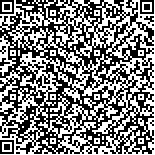| 摘要: |
| 海洋真菌广泛参与近海生态系统的物质循环和能量流动, 同时与海洋动物之间存在复杂的相互作用。贝类是我国主要的海水养殖生物, 为深入了解海洋真菌与贝类养殖的潜在关系, 选择厚壳贻贝养殖区海水及8种组织真菌为研究对象, 利用荧光定量PCR以及ITS rDNA高通量测序解析养殖厚壳贻贝各组织及所处海水环境的真菌群落丰度和结构特征。结果显示厚壳贻贝养殖区内和边缘海域的真菌丰度显著高于养殖区外围海域; 从贻贝养殖区和组织中共获得1 409个OTUs, 其中粪壳菌纲(Sordariomycetes) 在海水真菌群落为优势纲; 而在贻贝组织中, 锤舌菌纲(Leotiomycetes, 足20.13%、肾脏14.72%)、座囊菌纲(Dothideomycetes, 鳃2.89%、后闭壳肌1.92%、血淋巴1.36%)、散囊菌纲(Eurotiomycetes, 性腺3.59%、足1.57%)和伞菌纲(Agaricomycetes, 性腺3.09%、消化腺2.71%、鳃2.50%)占据优势地位。多样性分析显示厚壳贻贝和海水间真菌群落存在显著性差异; Bray-Curtis相似距离分析显示贻贝真菌群落与养殖区内海水更为相似, 而与边缘和外围海水差距较大。厚壳贻贝不同组织间、不同区域海水间的Beta多样性差异主要来自物种替换; 贻贝与海水间真菌Beta多样性的差异主要来自丰富度差异。综上所述, 厚壳贻贝体内真菌具有组织差异性, 并且养殖活动改变了养殖区海水的真菌群落。研究结果将为贝类真菌资源、贝类-真菌相互作用及生态影响提供基础。 |
| 关键词: 厚壳贻贝 真菌多样性 物种替换 ITS rDNA |
| DOI:10.11693/hyhz20231100252 |
| 分类号:P736.4 |
| 基金项目:国家自然科学基金资助项目,32200083号,42020104009号;浙江省自然科学基金资助项目,LTGS23C010001号;东海实验室开放基金资助项目,DH-2022KF0219号。 |
|
| DIVERSITY OF FUNGAL COMMUNITY IN TISSUES OF MYTILUS CORUSCUS AND ITS CULTIVATION SEAWATER |
|
SHAO Shuai, TAO Yu-Lin, YAN Guang-Xiang, TANG Chang-Sheng, LIAO Zhi, YAN Xiao-Jun, HE Jian-Yu
|
|
Laboratory of Marine Biological Resources and Molecular Engineering, College of Marine Science and Technology, Zhejiang Ocean University, Zhoushan 316022, China
|
| Abstract: |
| Marine fungi are widely involved in the material cycle and energy flow of offshore ecosystems. In addition, they have complex interactions with marine animals. To comprehend the correlation between marine fungi and mussel farm, seawater samples and 8 tissues of Mytilus coruscus were opted as the study's subjects. qRT-PCR and ITS rDNA high-throughput sequencing to examine the fungal abundance and structure in tissues of M. coruscus and the seawater. Results indicated that there is a significantly higher abundance of fungi within the mussel farming region and at the marginal area compared to that outside of the farming region. A total of 1 409 operational taxonomic units (OTUs) were detected from the seawater and tissues samples. Sordariomycetes was the dominant class in the seawater fungal community, while Leotiomycetes (feet: 20.13%, kidneys: 14.72%), Dothideomycetes (gills: 2.89%, adductor muscle: 1.92%, hemolymph: 1.36%), Eurotiomycetes (gonads: 3.59%, foot: 1.57%) and Agaricomycetes (gonads: 3.09%, digestive glands: 2.71%, gills: 2.50%) dominated the tissues. Diversity analysis illustrated significant differences in fungal communities between M. coruscus and the seawater. Bray-Curtis similarity distance analysis revealed that the mussel tissue-scaled fungal community was more similar to that in seawater within the farm and more distant from that at the marginal and outside seawater. Differences in Beta diversity between different tissues and among seawater in different regions were mainly due to species replacement; differences between mussels and seawater were mainly due to abundance variation. In summary, the fungi in M. coruscus were tissue-differentiated and the mussel disturbance have altered the fungal communities of seawater in the farming area. The results will provide a basis for mussel-associated fungal resource, interactions and ecological effects. |
| Key words: Mytilus coruscus fungal diversity species replacement ITS rDNA |
